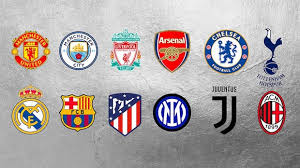Contents
ToggleSoccer League, or football as it is known in most parts of the world, is not just a sport; it is a cultural phenomenon. From the bustling streets of Europe to the distant villages of Africa, soccer leagues unite people in their passion for the game. These leagues are the backbone of professional football, providing platforms for players to showcase their talents and fans to immerse themselves in thrilling matches.
Soccer leagues vary in prestige, with some commanding global attention while others primarily cater to regional audiences. The English Premier League (EPL), La Liga, Serie A, Bundesliga, and Ligue 1 are some of the most prominent leagues, but there are also competitive leagues in Asia, South America, and Africa gaining recognition.
The Structure of Soccer Leagues

A soccer league typically follows a structured format where teams compete over a season to accumulate points. Wins, draws, and losses contribute to a team’s standings, with points awarded accordingly. Promotion and relegation systems are common, adding a layer of drama and motivation for clubs to perform consistently.
The scheduling of matches, transfer windows, and league policies are managed by governing bodies, which ensure fairness and uphold the competitive spirit of the league. In recent years, advancements in technology, such as VAR (Video Assistant Referee), have been integrated to ensure accuracy in decision-making.
Impact of Financial Investments
In recent years, financial investments have significantly shaped soccer leagues worldwide. Clubs backed by wealthy owners or corporations have the ability to secure high-profile players and world-class managers. The English Premier League, for instance, has become synonymous with lavish spending, with clubs investing heavily during transfer windows.
However, financial disparities between clubs have raised concerns about competitiveness. Wealthier clubs often dominate leagues, while smaller clubs struggle to keep up. This imbalance has led to discussions about implementing salary caps and financial fair play regulations to maintain equilibrium.
Star Players and Global Audience

The presence of star players often elevates the stature of a league. Icons like Lionel Messi, Cristiano Ronaldo, Neymar, and Kylian Mbappé not only bring immense skill to the game but also attract global audiences. Their influence extends beyond the pitch, with massive social media followings and lucrative endorsement deals.
Star players have the power to shift viewership trends. When Messi moved from Barcelona to Paris Saint-Germain, Ligue 1 experienced a surge in global interest. Similarly, Ronaldo’s return to Manchester United brought renewed excitement to the English Premier League.
Emergence of Women’s Soccer Leagues
Women’s soccer leagues have seen remarkable growth in recent years, breaking barriers and challenging stereotypes. Leagues like the Women’s Super League (WSL) in England and the National Women’s Soccer League (NWSL) in the United States have gained prominence, with increasing fan engagement and media coverage.
The success of international tournaments, such as the FIFA Women’s World Cup, has further fueled interest in women’s leagues. Sponsorship deals and broadcasting agreements are enhancing the financial stability of women’s soccer, enabling clubs to invest in infrastructure and player development.
Youth Development and Talent Pipelines
Youth academies and development programs are integral to the success of soccer leagues. Clubs invest heavily in nurturing young talents, with academies often acting as pipelines for future stars. Countries like Spain, Germany, and Brazil are known for their robust youth systems that produce technically gifted players.
Emerging leagues are also emphasizing youth development to compete on the global stage. By fostering local talent, these leagues aim to create sustainable growth and reduce dependency on foreign players.
Challenges Faced by Soccer Leagues
Despite its popularity, soccer leagues face numerous challenges. Corruption, match-fixing, and doping scandals have tarnished the reputation of some leagues. Addressing these issues requires stringent regulations and transparency from governing bodies.
The COVID-19 pandemic also posed significant challenges, disrupting schedules and causing financial strain for clubs. Although fans have returned to stadiums, the lingering effects of the pandemic are evident in the operational aspects of many leagues.
The Role of Technology in Soccer Leagues

Technology is revolutionizing soccer leagues, enhancing both the playing and viewing experiences. Innovations like VAR, goal-line technology, and wearable performance trackers are partaitogel improving accuracy and player performance. Broadcasters are utilizing augmented reality and high-definition visuals to deliver immersive experiences to fans.
Digital platforms and streaming services are also transforming how soccer is consumed. Fans can now access matches and highlights on their smartphones, expanding the global reach of leagues. Social media platforms play a pivotal role in engaging with audiences, offering behind-the-scenes content and real-time updates.
Cultural and Economic Influence of Soccer Leagues
Soccer leagues are deeply embedded in the cultural fabric of their respective regions. They are a source of pride and identity for fans, with rivalries often rooted in historical and geographical contexts. Matches between rival teams, such as El Clásico (Real Madrid vs. Barcelona) or the Manchester Derby (Manchester United vs. Manchester City), captivate millions of viewers.
Economically, soccer leagues generate substantial revenue through ticket sales, sponsorship deals, and broadcasting rights. They also create employment opportunities and contribute to the tourism industry, as fans travel to support their teams.
Future Prospects of Soccer Leagues
The future of soccer leagues is both exciting and uncertain. Emerging markets like China, India, and the Middle East are investing heavily in football infrastructure, aiming to establish competitive leagues. These developments could diversify the global soccer landscape and challenge the dominance of European leagues.
Sustainability is also becoming a focal point, with clubs and leagues adopting eco-friendly practices. From solar-powered stadiums to carbon-neutral initiatives, the soccer world is embracing its responsibility toward environmental conservation.
Conclusion
Soccer leagues are more than just competitions; they are epicenters of passion, culture, and economic activity. Their evolution reflects the changing dynamics of the sport, influenced by financial investments, technological advancements, and the emergence of new markets. As soccer continues to unite people across borders, leagues play a crucial role in shaping the future of the beautiful game.



